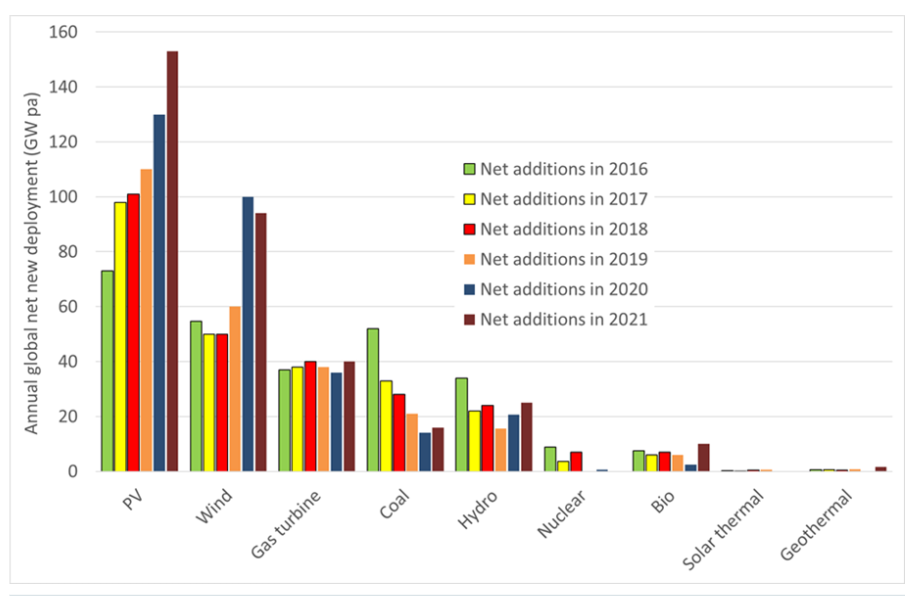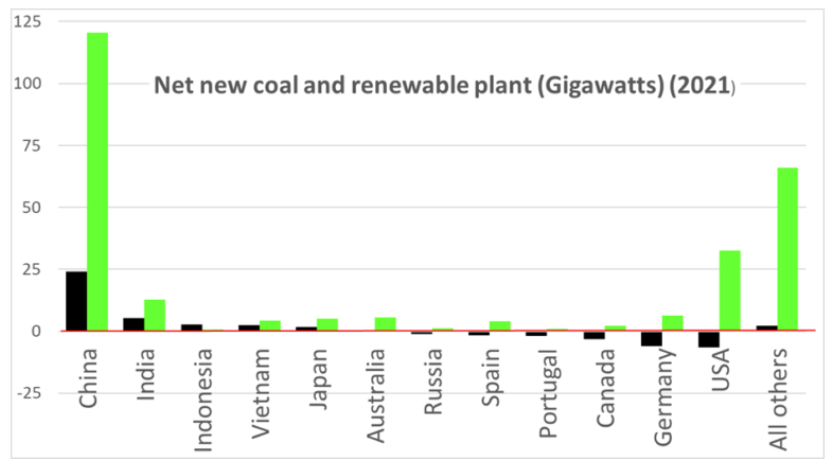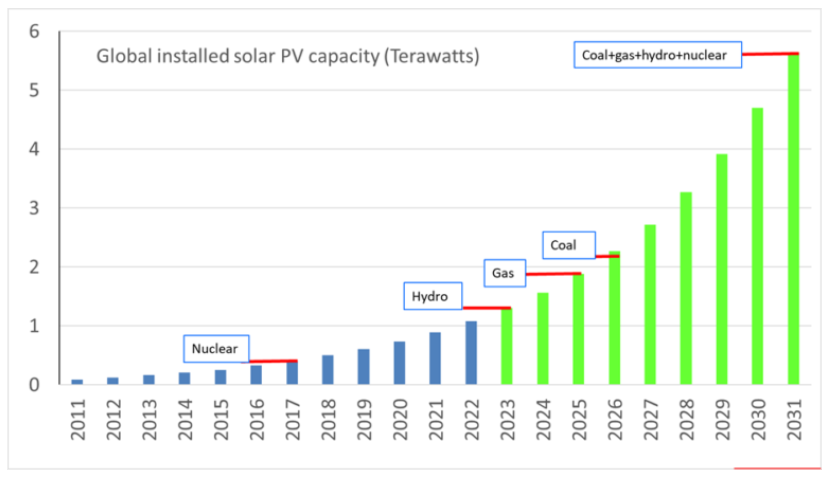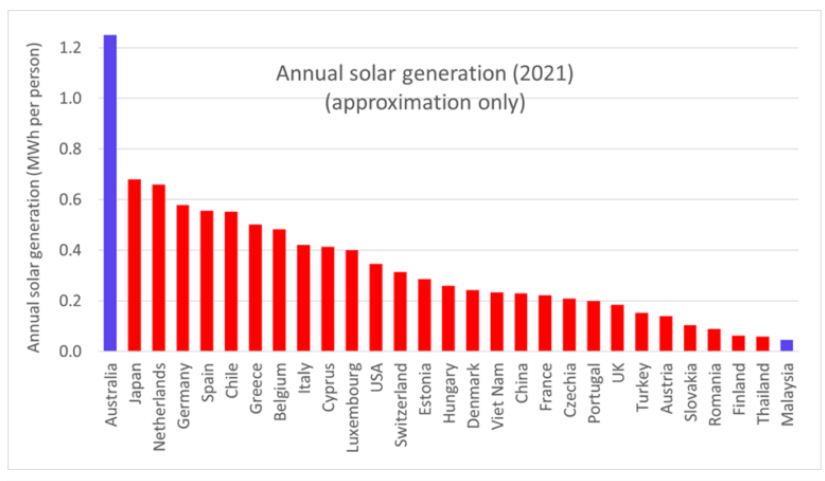International Solar Energy Society (ISES) is the oldest solar organization in the world, whose roots date back to 1954. Since 1963, ISES has been accredited by the United Nations and has been cooperating with numerous UN programs. This non-governmental organization works to create a world with 100 percent renewable energy that everyone will use efficiently and wisely. Their latest report, published at the end of January in pv magazine, shows how the world is switching rapidly to renewable energy sources. The analysis says that new solar and wind projects are being built at a rate three times higher than all other energy sources combined, proving that photovoltaics and wind energy are currently the most competitive and practical methods for introducing new production capacities.

This means that solar and wind are slowly replacing coal and gas generators, and are also meeting much of the rising demand for electricity, which is growing three times faster (2.7% per year over the 2011-21 period) than the global population. ISES expects that soon there will be large-scale electrification of transport, heating, and industry – the “electrification of everything”. This will lead to double or triple the demand for electricity. Solar and wind will also meet these new demands.

Fossil fuels cause three-quarters of global greenhouse gas emissions. But in most countries, solar and wind are being installed at a much faster rate than new coal plants. Excluding China, global coal capacity has been falling for several years, as older power stations shut down faster than new power stations open. The paucity of new coal capacity means that the world is at peak coal, says ISES.
Solar and wind have passed 1 TW of installed capacity on the global level. Research shows that the development of solar PV and wind is increasing exponentially. Cumulative installed solar capacity will overtake wind soon.
The growth rate in annual deployment rate in recent years has been about 18%. Projecting this growth rate forward shows that installed solar capacity will pass the combined total of nuclear, hydro, gas, and coal in 2031.

Electricity consumption in developed regions such as Europe, North America, Japan, and Australia has reached between 7 MWh and 15 MWh per person per year. The electrification of transport, heating, and industry to get rid of fossil fuels involve a doubling of electricity demand or more, depending on a country’s participation in the chemical industry. Electricity consumption in developed countries could therefore hit 20 MWh per person per year by the middle of the century. The global population in the mid-century is projected to be about 10 billion people. An affluent and fully electrified global economy with zero fossil fuels will therefore require about 200,000 TWh of electricity per year.

Australia, for example, is generating twice as much solar electricity per capita than any other technology. The Australian government’s target for 2030 is to provide 82% renewable electricity (mostly solar and wind). Australia is demonstrating that the rapid deployment of solar and wind is compatible with affordable electricity prices and a stable electricity grid.
Solar energy has a far larger resource base than any other source of production and will have to provide the majority of energy in the future, or about 60% or 120,000 TWh of total future energy, the analysis predicts. To achieve the desired goals by the middle of the century, it is necessary to install 4 TW of solar capacity annually by the mid-2030s. The current solar power plants’ annual growth rate is nearly enough to achieve this goal.
source: pv magazine










